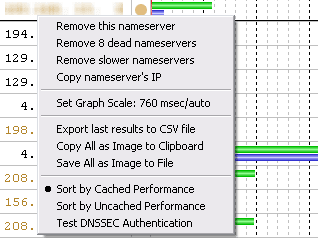

Our contributions can be summarized as follows: discuss how resolvers can mitigate attacks by capping DNS chains without compromising the benign usage of chains in DNS. We foresee countermeasures that can be deployed by ANS, such as detecting malicious DNS chains or enforcing lower bounds, ensuring more caching, for TTL values. We complete this paper with an extensive discussion how such attacks can be remedied. We find that the vast majority of resolvers support chain lengths of 9–27 (and more) elements, resulting in tenfold amplification due to the number of times a target ANS is queried per request the attacker sends. To the best of our knowledge, this is the first DoS attack that combines amplification with application-layer attacks. This has the effect that resolvers query the target ANS not just once, but several times-until the end of the chain is reached. ) that involve the target ANS in every other step. However, instead of blindly sending out queries to random domains hosted by the target ANS, the attacker carefully crafts long chains of DNS records ( a. \(\,\rightarrow \,\) b., b. \(\,\rightarrow \,\) c. The core idea of our attack borrows from random prefix attacks. We dub this attack DNS Unchained, as it abuses the chaining behavior of CNAME and DNAME resource records in DNS. We then describe a novel form of application-layer attacks that floods the victim with an order of magnitude more queries per second than random prefix attacks.
Google dns benchmark app Offline#
Such attacks can be launched from malware-infected devices or even JavaScript and already have the potential to put large DNS hosters offline (e.g., Dyn in 2016). They are a form of flooding DNS attacks and get their name from the characteristic prefixes used to circumvent resolver caching. Yet in practice, attackers have distributed the attack and use resolvers as intermediaries in so called random prefix attacks . In the simplest form, a single attack source can send queries to domains hosted by this name server. We start by describing existing forms of application-layer attack against DNS that overload a target ANS with valid DNS requests.

In particular, they (i) are significantly harder to distinguish from benign traffic, (ii) not only target bandwidth, but also computational resources, and (iii) do not rely on IP address spoofing and can be launched even though providers deploy egress filtering . Compared to volumetric DoS attacks, application-layer attacks are more appealing to adversaries. In this paper, we explore application-layer attacks against core DNS infrastructures, namely authoritative name servers (ANSs). Yet any of these rather simple volumetric attacks can be filtered with the help of data scrubbing services such as Arbor, Cloudflare, or Incapsula. A popular and powerful example of volumetric attacks are so called amplification attacks , where miscreants abuse that open services (such as NTP servers) reflect answers to IP-spoofed requests. In a successful attack, benign DNS queries are dropped such that normal users no longer see responses from the DNS hosters. Up to now, DDoS attempts against the DNS infrastructure have focused mostly on volumetric attacks, where attackers aim to exhaust the bandwidth that is available to DNS hosters.

For example, in October 2016, attacks against the DNS hoster Dyn have knocked Twitter, Netflix, Paypal and Spotify offline for several hours -simply because the authoritative name servers for these services were hosted by Dyn and became unresponsive due to a successful Distributed DoS (DDoS) attack against Dyn. Yet recent incidents have demonstrated how vulnerable DNS is to Denial-of-Service (DoS) attacks, even for hosters that massively invest in over-provisioning and deploy highly-reliable anycast networks. We rely on the availability of these services for everyday communication. Also, several other applications heavily depend on DNS, such as load balancing (e.g., for Content Delivery Networks), anti-spam methods (e.g., DKIM , SPF , or IP address blacklists ) and TLS certificate pinning . Not only is DNS the primary mean for mapping and translating domain names to IP addresses. The Domain Name System (DNS) is at the core of today’s Internet and is inevitable for networked applications nowadays.


 0 kommentar(er)
0 kommentar(er)
